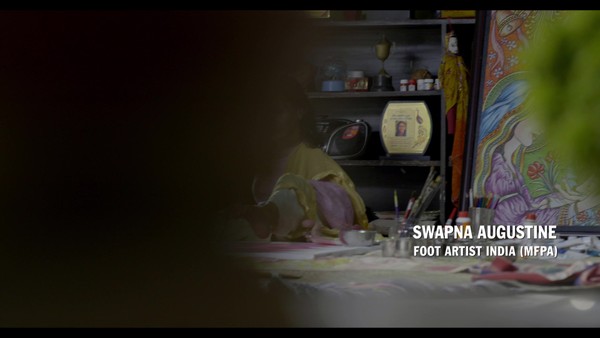Social and Influencer > Culture & Context
DOVE #STOPTHEBEAUTYTEST
OGILVY INDIA, Mumbai / DOVE / 2021
Awards:


Overview
Credits
OVERVIEW
Why is this work relevant for Social & Influencer?
90% of Indian women have arranged marriages where they go through the ‘Beauty Test’. They face harsh judgement, humiliation and rejection based on looks, which diminishes their self-esteem and confidence. Wrapped in the garb of tradition, these practices are hidden behind closed doors. There’s awareness, but also secrecy and collective desensitization on account of its pervasiveness and social acceptance.
‘Stop The Beauty Test’ employed the voices of influential Indian women, who through their own stories, provoked conversations around the issue and rallied with Dove to encourage positive change towards a more inclusive idea of beauty that’s free from judgment.
Background
In India, the pursuit of beauty has one goal – marriage.
For Indian women, beauty related anxieties and insecurities begin when they’re children as social pressure results in conditioning that makes them feel like they are not good enough.
This was an opportunity for Dove make good on its purpose of making beauty a source of joy and not anxiety. And in doing so, cement its position in the hearts and minds of the audience. This was a necessary intervention in a highly price-sensitive market, where the brand was at risk of becoming one amongst many.
The Brief: Build stature and strengthen brand love by being meaningful to women in India.
Objectives: Spark, inspire and share a conversation through social media and influencers to see Dove as a brand that broadens the definition of beauty & challenges negative stereotypes.
Describe the creative idea
How could something as beautiful as finding a life-partner become so ugly?
That is the big question the campaign idea was designed to provoke.
But the bigger question was, what could Dove do to make a real difference?
#StopTheBeautyTest is an idea born out of conversations with real women from across the country. The advertising brought to life stories of women who faced judgement and rejection by prospective in-laws for not being tall-fair-slim with straight long hair. It throws light on unseen impact of these judgements on their self-esteem and confidence.
To talk about a problem everyone has experienced but no one discusses, Dove utilised the voice of influential Indian women who, through their own stories and experiences, provoked conversations to drive change.
Describe the strategy
The Dove target audience is a woman who is aged between 18-40 years and spends close to 120 minutes every day online. 80% of that time is spent on Social Media which connects with her friends and family.
People aged 18-40 years spends close to 145 minutes every day on social media. *source: GWI
Media Planning:
While the concept of beauty prejudices before arranged marriages is prevalent across the various stratas of the society, Dove focussed on its core TG LSM 4+ urban women consisting of 70 million households pan India.
Approach:
Spark a conversation on beauty prejudices with women on social media at large.
And Inspire: ‘Beauty Pursuers’ ‘Bride-seekers’ and ‘would-be brides’
Share: Real stories of women who stepped forward and expressed to stop the beauty test
Describe the execution
PR campaign social (Don’t have these nos)
Master video Asset with Real Women-The Dove ambassadors was amplified on YouTube and FB.
The Dove ambassadors became the ‘Digital Cover Girls’ of the biggest beauty magazine ‘Femina and Grazia’ alongwith their cover stories on publisher social handles
Influencers across various genres like beauty, travel, sports, entertainment etc joining and inspiring with stories on their social handles. Apart from seeding the video master asset. Their feature stories too were covered at length and promoted in the biggest beauty magazines social handles
Inspiring stories of the real women in Humans of Bombay- A storytelling platform equivalent of Humans of New York.
Multiple inspiring posts were published on Bebeautiful.com and its social handles -Unilever’s own Beauty Platform.
Partnership with Matrimonial Platform -Shaadi.com for contextual messaging and deep integration on female profiles.
List the results
In just one month, the campaign reached 75% of urban households:
· 2 million organic views on Instagram on day 1.
· Total 61 million views and a watch-time of 1.7 million hours ie. 192.7 years’ worth of content
· An earned PR value of USD 340,150.
The campaign garnered around 390 million cumulative impressions and a cumulative reach of 200 million across Facebook, Instagram and Twitter.
There was a 35% growth in new subscribers on Dove’s YouTube channel.
The content had high engagement with 1.15 million likes, shares & comments.
Post-campaign research showed that it was successful in changing audience’s perception of the brand.
· 80% agree ‘Dove Cares about women’
· 78% agree ‘Dove celebrates all kinds of women and their beauty’
· 75% agree ‘Dove leads the way in evolving conversations on beauty and self-esteem’
· 74% agree ‘Dove challenges negative beauty stereotypes and is redefining beauty’
Please tell us about the cultural insight that inspired the work
In India, beauty is sold in a marketplace called marriage.
In a country of 631 million women it is shocking that from the time a girl child is born, she is constantly looked at through the marriage lens.
So when she gets to marriageable age, the beauty pressure mounts, as most young women go through 'the beauty test' in the matchmaking process.
The groom accompanied by his family comes over to 'check out' the bride. Does she have a marriageable face? A marriageable body? Does she meet the beauty standards which scream out loud across matrimonial ad pages. Slim, fair, tall? If not, she's rejected. Her self-esteem diminishing with each rejection.
90 percent of unmarried women in India feel they are rejected on the basis of their looks. At Dove we questioned how can something as beautiful as finding your life partner turn so ugly. And so our campaign #StopTheBeautyTest.
More Entries from OGILVY INDIA
24 items



